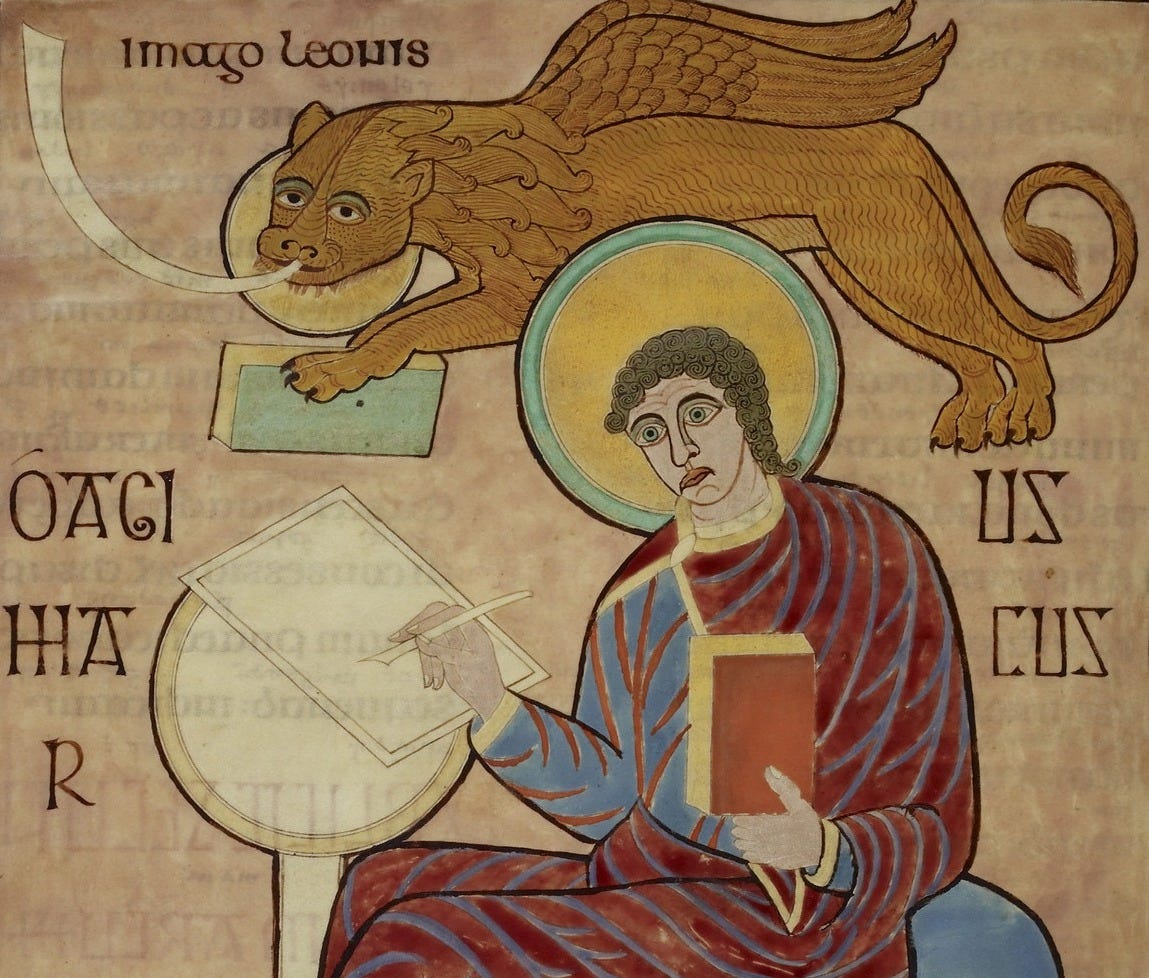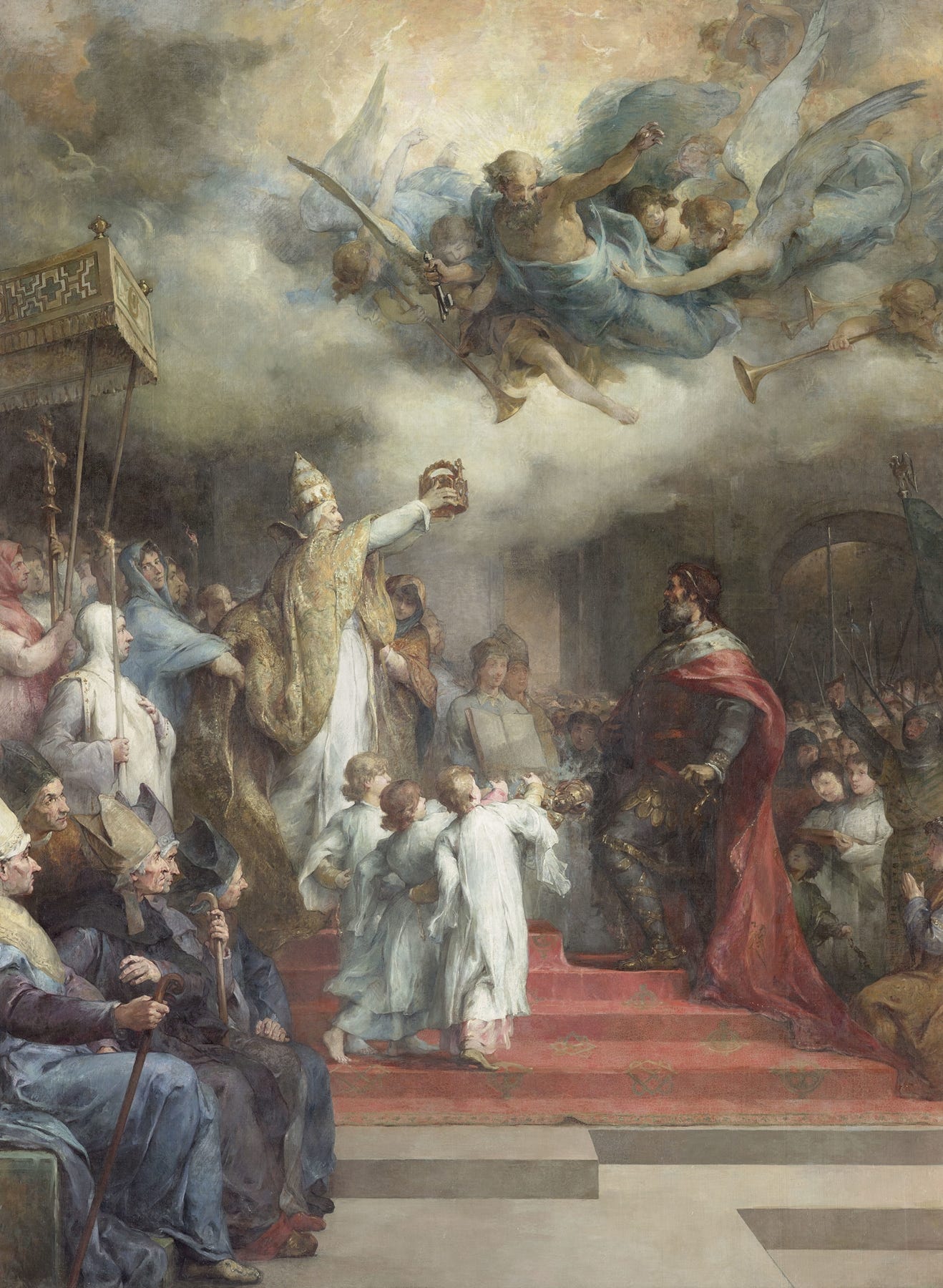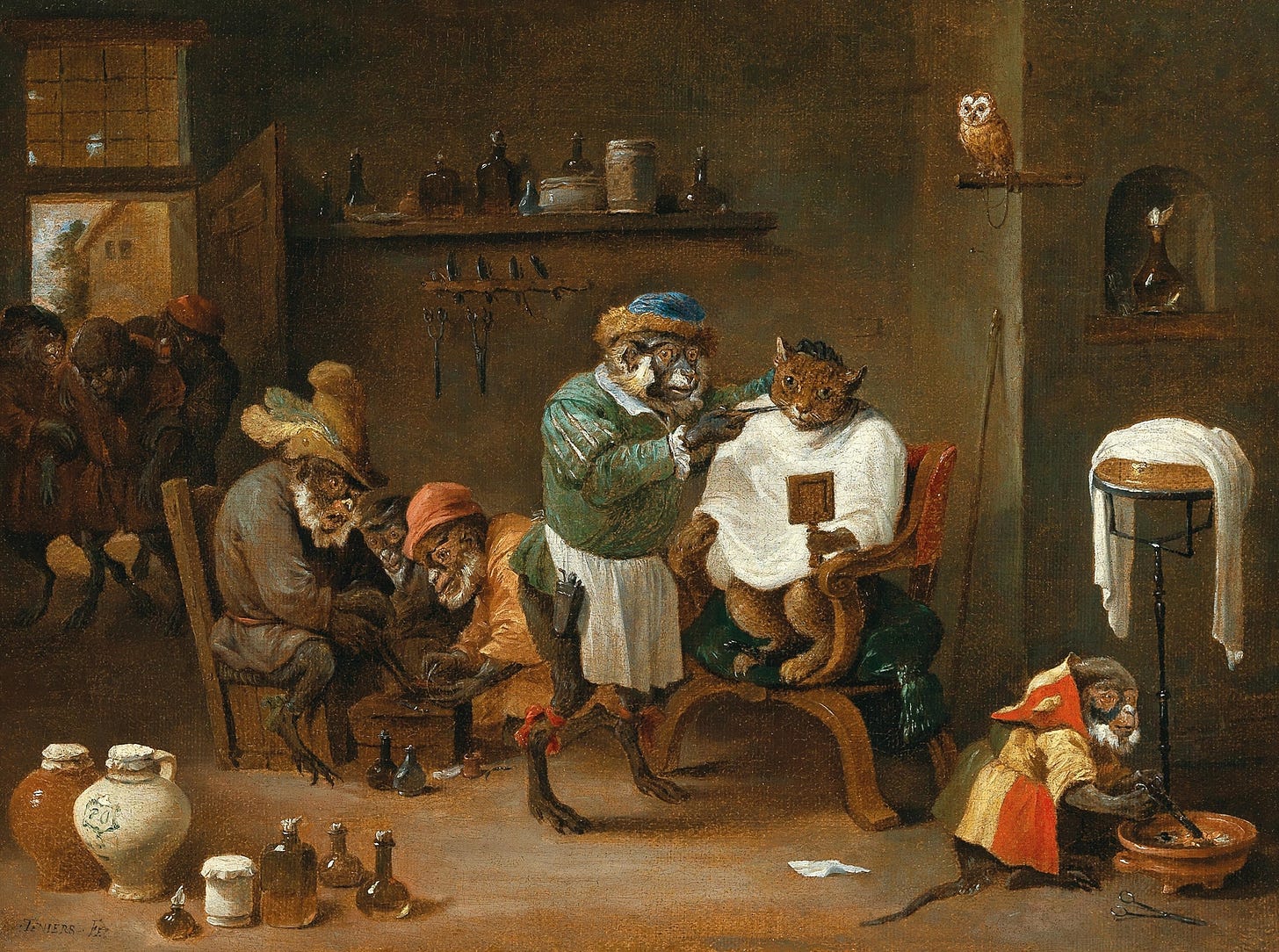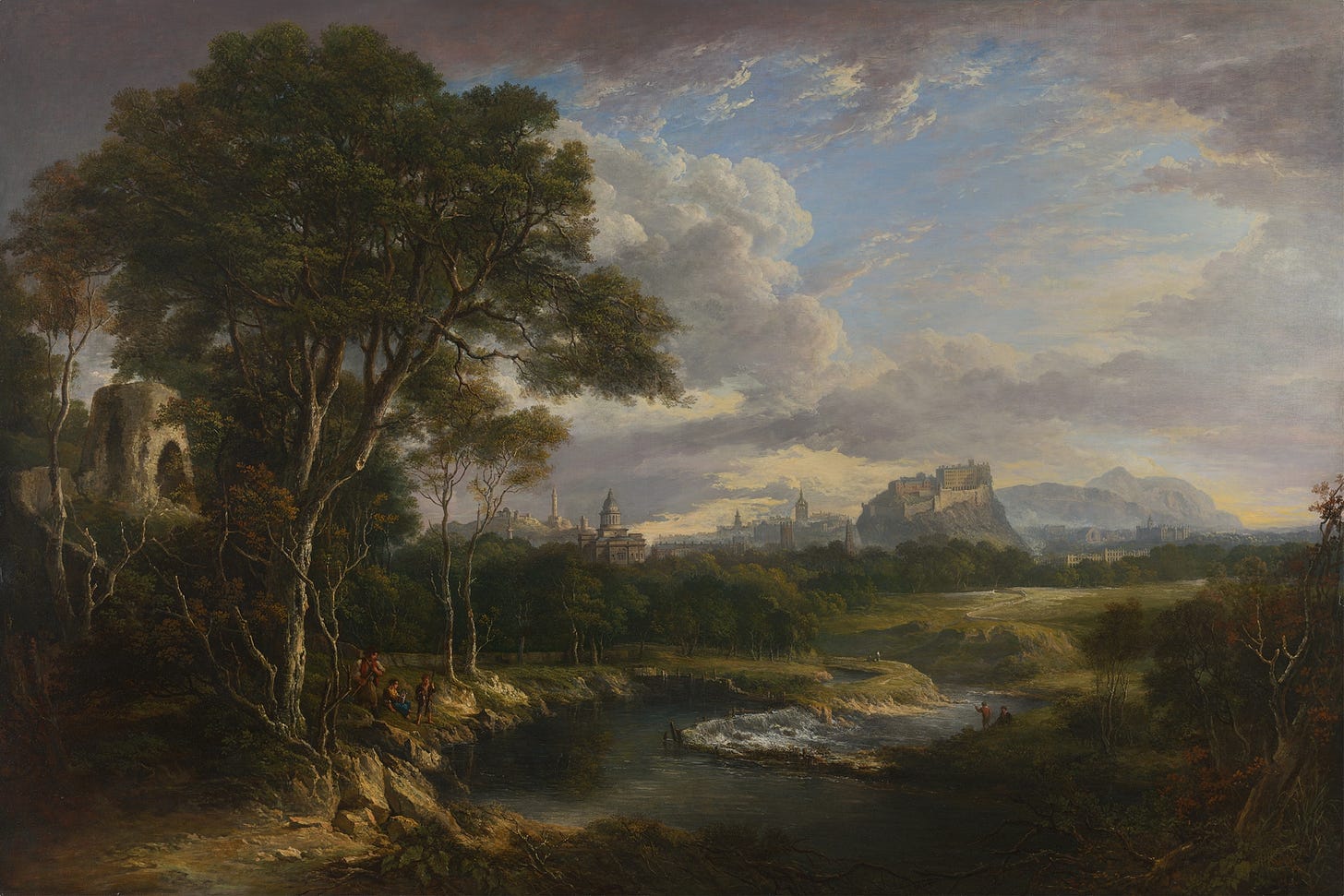The strangest letter of the alphabet
The rise and fall of yogh

English spelling has a reputation. And it’s not a good one.
It’s full of silent letters, as in numb, knee, and honour. A given sound can be spelled in multiple ways (farm, laugh, photo), and many letters make multiple sounds (get, gist, mirage).
English spelling is so complex that we’ve made mastering it into a competitive sport: what would be the point of a spelling bee in a language with a predictable spelling system? Where’s the fun unless you have to sweat a little as you struggle to recall whether this particular word is one where “‘i’ before ‘e’ except after ‘c’” doesn’t apply?
In short, English has a complicated writing system.
I’ve written about the origin of some of this complexity before, blaming everyone from the French to stingy printers and late medieval yuppies. But I’ve not yet plumbed the depths of this complexity. To do so, I will need to tell you the story of yogh,1 an obscure medieval letter whose rise and fall allows us to peer into this abyss.
But like an Icelandic family saga, we begin not with the story of yogh, but with the story of its parent. So allow me to introduce you to the letter ‘g,’ which, as you’ll soon see, is a complicated letter in its own right, dating back to Old English.
It starts with the shape of the letter. When modern editors print Old English today, they print nice, modern-looking ‘g’s — that is, the ones we use today, with an open or closed loop on the bottom, depending on the typeface.
This modern form of ‘g’ is called the Carolingian ‘g.’ It had its origin in the Carolingian minuscule, the script used by the scribes of the Carolingian Renaissance, the great revival of learning which flourished in the vast realm of Charlemagne (reigned 768–814).2
But Old English scribes didn’t write their g-sounds with a Carolingian ‘g.’ The Old English letter ‘g’ was written in a form called the insular ‘g.’ Here’s what it looked like: ‘ᵹ.’ It’s like a mix between a ‘z’ and a ‘3.’
Let’s see it in action. When the first lines of Beowulf are written in a modern edition, they look like this:
Hwæt, we Gardena in geardagum
þeodcyninga þrym gefrunon,‘How we have heard of the glory of the kings of the spear-Danes in days of old’
(Beowulf 1–2)
But in the manuscript, they’re written like this:
HǷÆT ǷE GARDE
na inᵹear daᵹum þeod cyninᵹa
þrym ᵹefrunonLondon, British Library, Cotton MS Vitellius A XV, f. 132r.
Now, there’s clearly lots of other weird stuff going on in the manuscript, but focus on how the ‘g’ is represented. While the majuscule (capital) ‘G’ in ‘gardena’ is spelled more like a modern ‘g,’ all the others are insular ‘ᵹ.’
Interestingly, the Anglo-Saxons did use the Carolingian ‘g’ — just not for Old English. They used it when writing Latin, at least after the late 10th century. This was when the Church in England underwent a set of reforms, which caused a flowering of literature both in Latin and Old English.3 As part of these reforms, the Carolingian minuscule script was adopted for Latin texts.
So for a period, both ‘g’ and ‘ᵹ’ were used in England, but generally speaking, each was used for writing the ‘g’ sound in a different language. Simple enough, but the stage was set for things to get a lot more complicated.
But for that, we need the help of the Normans.
You're reading The Dead Language Society. I'm Colin Gorrie, linguist, ancient language teacher, and your guide through the history of the English language and its relatives.
Subscribe for a free issue every Wednesday, or upgrade to support my mission of bringing historical linguistics out of the ivory tower and receive two extra Saturday deep-dives per month.
If you upgrade, you’ll also be able to join our ongoing Beowulf Book Club and watch our discussion of the first 915 lines (part 1, part 2) right away.
Of course, they would have spelled it ȝoȝ
For the history of the English language, no single year was more momentous than 1066. In this year, William, Duke of Normandy, invaded and took the English throne, bringing with him Norman knights, and more importantly for our purposes, Norman scribes.
These Norman scribes inherited the writing traditions that the Carolingian renaissance had given birth to. This meant the latest, greatest, 11th-century French versions of the Carolingian minuscule.
These weren’t so different from the way Anglo-Saxon scribes had written Latin. But they were very different from the way they had written Old English, especially in the ‘g’ department.
But that wasn’t so much of an issue, since these Norman-trained scribes, and those of the generations that came after them, didn’t write much English at all. In fact, writing in English of any kind was very scarce up until the end of the 12th century.
Over the course of that tumultuous — and, for English, silent — century, the language had changed a great deal. All the scribes trained in the old, Anglo-Saxon traditions were long dead, so when a new generation of scribes turned their attention once again to English, they had to devise some new strategies for writing it.
And this, after a surprisingly long delay, is where we first meet the star of today’s issue: ‘ȝ,’ also known as yogh.
Yogh is descended from a variant form of the old insular ‘ᵹ.’ But, while the insular ‘ᵹ’ was thought of as the same letter as the Carolingian ‘g’ in Anglo-Saxon times, the yogh ‘ȝ’ of the 12th century was an entirely different letter from the Carolingian-derived ‘g.’
And, stranger still, ‘ȝ’ was used to write two completely different sounds in Middle English, the form of English spoken from around 1100–1450: the y-sound as in young or yesterday, and another sound that English has lost altogether.
The other sound that ‘ȝ’ once spelled is the “harsh” or “guttural” sound made in the back of the mouth, which you hear in Scots loch or German Bach.4 This sound is actually the reason for the most famous bit of English spelling chaos: the sometimes-silent, sometimes-not sequence ‘gh’ that you see in laugh, cough, night, and daughter. Maybe one day I’ll tell you that story too.
For today, however, just know that the spelling ‘gh,’ which causes spellers so much trouble, was originally a replacement for ‘ȝ’ in these words. But more on that later. Let’s dwell for a moment on the bizarre situation we had in Middle English, where the same letter ‘ȝ’ could represent either a y-sound or that now-vanished gh-sound.
But not as bizarre as this painting
Or is it actually so bizarre?
Modern English spelling is, of course, chaotic. So perhaps it shouldn’t surprise us that we too have a very yogh-like situation with two of our letters: ‘c’ and — wait for it — ‘g.’
Each of these regularly represents two not particularly similar sounds. The letter ‘c’ sometimes represents a k-sound, like in cat, and sometimes an s-sound, like in city. The letter ‘g’ is similar: sometimes it writes a true g-sound, like in good, but other times, what it represents is a j-sound, like in gem.
If these sounds seem similar to you, pay attention to your tongue as you make each one: the k-sound and the true g-sound are made with the back of your tongue hitting against your soft palate. The s-sound and the ‘j’ sound are made in slightly different places, but in both cases, they use the tip of your tongue coming up against (or close to) just behind your upper teeth.
Each of our two double-sounding letters, ‘c’ and ‘g,’ has two variants, which are made at completely different ends of the mouth. This is how yogh worked too: it had one variant made at the back of the mouth (the gh-sound) and the other made towards the front (that’s the y-sound).
There’s actually a good linguistic reason why this pattern keeps happening. It’s a sound change called palatalization: this happens when a sound made towards the back of the mouth, like a k- or g-sound, gets pulled forward because it’s next to another sound made at the front of the mouth. Often, these front-of-the-mouth sounds are vowels.
In Old English, these front-of-the-mouth vowels (front vowels for short) included the ones spelled ‘i’ and ‘e,’ which sounded like the vowels in bee and bay.5 Sometime in the deep prehistory of the English language, the ‘g’ sound got pulled forward in the mouth to sound like ‘y’ whenever it was next to these front vowels.
But when it came time to spell these ‘y’ sounds in the Latin alphabet, they still seemed to the Anglo-Saxon scribes to be versions of ‘g’ sounds. So they spelled them ‘ᵹ’ just like they spelled other ‘g’ sounds. This is why, when you read Old English, you can often replace ‘ᵹ’ (or ‘g’ in modern editions) with ‘y’ and get recognizable Modern English words: ᵹear is year, dæᵹ is day, weᵹ is way.6
A process like this happened in the ancestor of French too, just slightly differently. Instead of the ‘g’ being pulled forward into a ‘y’ sound before ‘i’ and ‘e,’ it got pulled forward into a ‘j’ sound.
This is why the Modern English ‘g’ represents two sounds, one before the letters ‘i’ and ‘e’, and the other before the other letters. It’s because we took our spelling conventions from how the Norman scribes wrote their language, which was an old form of French.7
While the Norman scribes, and the later English scribes they trained, were used to the letter ‘g’ writing two different sounds, neither was a y-sound. They needed another letter for that, and they found one: the old insular ‘ᵹ,’ or rather, its descendant, the yogh ‘ȝ.’
So that’s why ‘ȝ’ spelled a ‘y’ sound. To understand why ‘ȝ’ also spelled that vanished ‘gh’ sound, however, we need to go back into the distant history of English, long before it was ever written down. Actually, long before there even was an English.
Back then, there was just one single language, which would later split into English, Dutch, German, Swedish, and all the other Germanic languages.
In this Proto-Germanic language (as it’s called today), the sound that would become the English g-sound — which the Anglo-Saxons would later spell ‘ᵹ’ — was not the g-sound we have today in words like good or bag. That came later.
Instead, the Proto-Germanic ancestor of words like good had a sound very similar to the later Middle English gh-sound at the start.8 Only later would English harden that gh-sound into the g-sound we know today. But this only happened in certain places in the word, especially at the start. At the end of the word, the gh-sound remained. In Old English, both versions were spelled the same: ‘ᵹ.’
This means that ‘ᵹ’ actually had three pronunciations in Old English, not two: the y-sound (next to front vowels), the g-sound (at the start of words), and the gh-sound (in the middle of words). So when those Norman-trained scribes turned their attention to writing English in the 12th century, they had no problem writing the g-sound at the start of words with ‘g.’
But when they wanted to write the gh-sound, they ran into the same problem they had in writing the y-sound. They didn’t have a good way to write the gh-sound, which didn’t exist in French at the time, so they pressed yogh into service again.
And that’s why yogh has two sounds, each of which corresponds to a pronunciation of the Old English letter ‘ᵹ’ that the French scribal tradition couldn’t accept writing with ‘g.’
Wait, we’ve been saying ‘Mackenzie’ wrong?
When you’re reading Middle English, it can get a bit confusing: Which kind of yogh is which?
Look at this line from Sir Gawain and the Green Knight:
Þaȝ ȝe ȝourself be talenttyf, to take hit to yourseluen,
‘Though you yourself are eager to accept it [a challenge] personally,’ (Sir Gawain and the Green Knight 350)
In this line, the first yogh makes the gh-sound, while the second and third represent y-sounds. But you just have to know the words in order to figure that out.
As inconvenient as this confusion is for us modern readers of Middle English, that isn’t the reason yogh disappeared from the English language. The fate of yogh was sealed by a conspiracy of factors.
One is that yogh was never the only alternative for writing the sounds it wrote. The y-sound could also be written in the way the French wrote it, that is, ‘i’ or ‘y.’ The latter is the spelling that English ended up using for this sound, hence yourself instead of ȝourself. The gh-sound could also be written ‘h,’ ‘ȝh,’ or ‘gh.’ The last of these, of course, is what English ended up adopting.
But the death blow dealt to yogh was the printing press. The earliest printing press in England was a Flemish import, as were the typefaces. But the yogh letter was unique to English, and like the other letters unique to English, it would be expensive to print. And, as we just saw, there were ready alternatives, so yogh disappeared without a trace… from English.
In Scotland, on the other hand, it stuck around for longer. Scots used the combination ‘lȝ’ to represent an ‘ly’ sequence like we have in million, and ‘nȝ’ to represent either the ‘ny’ sequence like in canyon, or an ‘ng’ sound like in singer.
And Scottish printers were more eager to keep it than English printers were. So they took advantage of the visual similarity between ‘ȝ’ and ‘z’ — most forms of cursive writing in English still write ‘z’ like ‘ȝ’ — to write their yoghs with ‘z’s.
You still see the results of this substitution, ‘lz’ and ‘nz,’ in certain Scottish names. But the ‘z’ has led them to be pronounced in ways that have nothing to do with their traditional forms. So Menzies and Mackenzie were meant to spell things that sounded more like Mingus and Mackenyie.
And that’s how one single letter of the Middle English alphabet ended up being pronounced like ‘y,’ ‘gh,’ or even eventually like ‘z.’ I warned you it would be complicated.
But the journey through the history of yogh has allowed us to peer down some interesting side alleys of the history of writing, from Carolingian scribal practices to the compromises of Scottish printers.
I don’t lament the loss of yogh myself, not nearly as much as I lament the fate of other lost letters. But if the cause of yogh is one ȝou fancy taking up ȝourself, there’s nothing standing in ȝour waȝ (it’s included in many modern fonts), althouȝ I can imagine hiȝer causes to aspire to.
The name of the letter yogh is pronounced today in many ways: you can say it to rhyme with log, loch, or brogue.
Technically, it was the double-storey, closed-loop ‘g’ that was associated with Carolingian minuscule. The open-loop, single-storey ‘g’ was a later development. Today, they’re seen as more or less interchangeable: in fact, I don’t even know what version you’re seeing when you read this, since it’ll look different on the web and in your email client.
If you know phonetic terminology, I’ll be more specific: this sound was the voiceless velar fricative, or [x] in the International Phonetic Alphabet. In some situations, it was likely the voiceless palatal fricative (IPA [ç]).
If you want to know why the names of these letters sound completely different in Modern English (‘i’ and ‘e’ sound more like the vowels in buy and bee), let me tell you all about it.
Conscientious modern editors (myself included, he said humbly) will spell the ‘g’ that you’re supposed to pronounce like ‘y’ with a little dot on top: ‘ġ.’
Ditto for the two pronunciations of ‘c.’
Note for nerds: this was the voiced velar fricative [ɣ]. Yogh would later be used for the voiceless velar fricative [x], which actually had a different origin in the ancestor of Old English. But the two sounds ended up sounding identical at the end of a word, so yogh ended up being used for both.





Once again thank you for making a complex history , in this case, somewhat comprehensible. This one has caused me domestic strife. During my futile attempts to verbalize many of the sounds described and, as I increased my volume in frustration, my wife overheard from the far end of the house. She rushed to my aid assuming I had inspired a potato chip and was in immediate need of the Heimlich Maneuver. She had juggled in her mind how to pull this off considering our relative sizes.
In short I’m now banned from such attempts in the house. Now I have to worry only about my already leery neighbors.
Finally, I now understand why the British politician Menzies Campbell was always called Ming Campbell on the news.